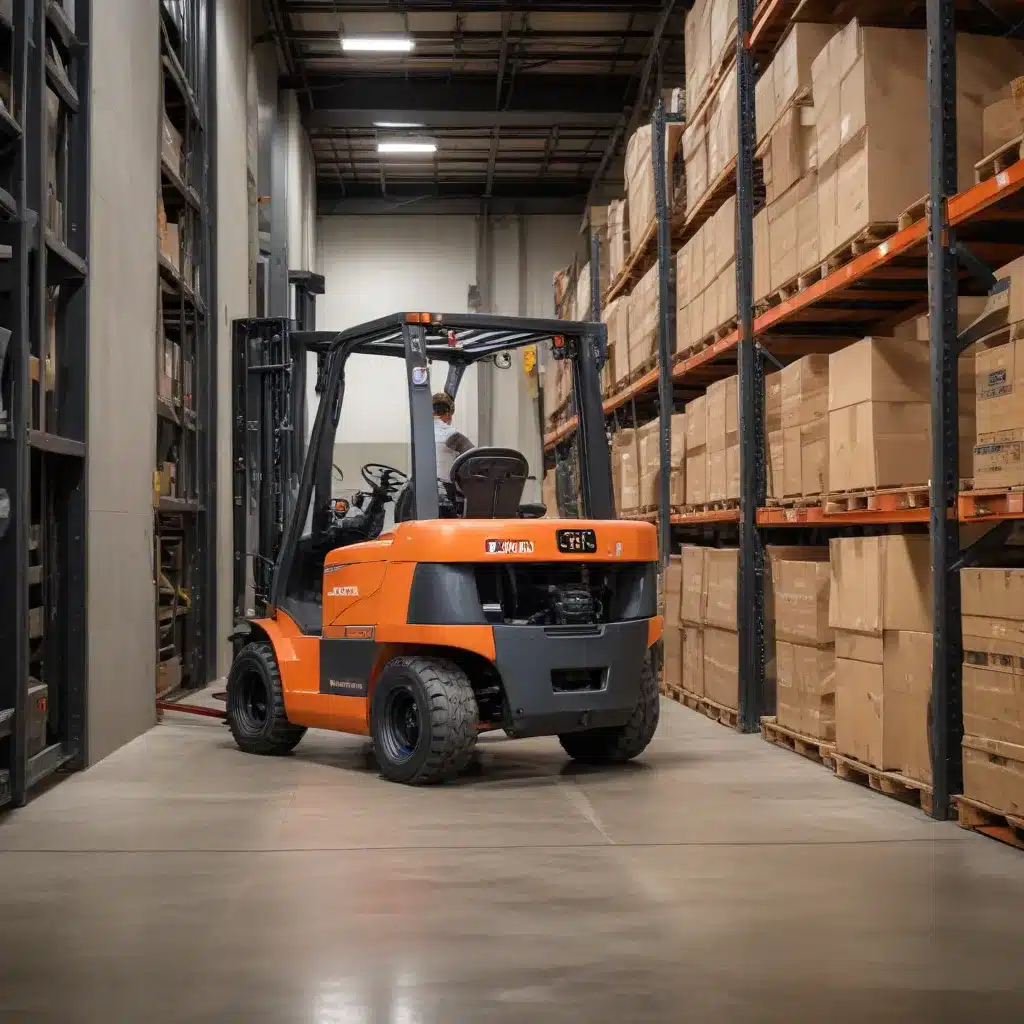
Navigating the Forklift Acquisition Landscape: Leasing vs. Buying
As a seasoned industry expert, you understand that the decision to lease or buy forklifts can have a profound impact on a facility’s energy efficiency and overall sustainability efforts. With the increasing emphasis on eco-friendly operations and cost-saving measures, it’s crucial to carefully weigh the pros and cons of each approach to ensure your material handling solutions align with your long-term goals.
Understanding the Leasing Advantage
Forklift leasing offers several distinct advantages that can support your sustainability initiatives. One of the primary benefits is the ability to access the latest, most energy-efficient models without the upfront capital investment required for purchasing. Leasing allows your facility to regularly upgrade to newer, greener equipment that incorporates the latest advancements in battery technology, motor efficiency, and regenerative braking systems.
By consistently leveraging the most cutting-edge forklift technology, you can optimize energy consumption and reduce your carbon footprint. Many leasing providers also offer comprehensive maintenance and repair services, ensuring your forklifts operate at peak performance and efficiency throughout the lease term.
The Benefits of Forklift Ownership
On the other hand, owning your forklifts can also contribute to improved energy efficiency and sustainability in your facility. When you purchase equipment, you have complete control over maintenance schedules, upgrades, and operational practices. This level of autonomy enables you to implement customized strategies to maximize the lifespan and performance of your forklifts.
Forklift owners can also take advantage of incentives and tax benefits associated with investments in energy-efficient or alternative-fuel equipment. Various state and federal programs offer rebates, tax credits, and other financial incentives to encourage the adoption of sustainable material handling solutions, which can further enhance the long-term cost savings of ownership.
Evaluating the Total Cost of Ownership
When comparing leasing and buying, it’s essential to consider the total cost of ownership (TCO) for each option. While leasing may offer lower upfront costs, the cumulative expenses over the lifetime of the equipment can vary. Factors such as maintenance, repairs, energy consumption, and end-of-lease disposition must be carefully weighed.
Conversely, purchasing forklifts can provide greater long-term cost predictability, as you’re responsible for the full lifecycle expenses. However, the initial capital outlay can be a significant investment, potentially straining your facility’s budget.
Aligning Forklift Acquisition with Sustainability Goals
Regardless of whether you choose to lease or buy, it’s crucial to align your forklift acquisition strategy with your broader sustainability objectives. This may involve prioritizing the procurement of electric or alternative-fuel forklifts, implementing fleet management systems to optimize energy usage, and exploring opportunities for battery reclamation or recycling.
Many leading companies, such as Amazon, are taking significant strides to integrate sustainable material handling practices into their operations. By carefully evaluating the environmental impact of your forklift fleet, you can make informed decisions that contribute to your facility’s overall energy efficiency and environmental stewardship.
Maximizing Energy Efficiency and Sustainability through Forklift Fleet Management
Irrespective of your forklift acquisition approach, effective fleet management is essential for optimizing energy efficiency and sustainability. This includes implementing robust maintenance schedules, monitoring energy consumption, and leveraging data-driven insights to inform your decision-making.
Preventive Maintenance: The Key to Efficient Operations
Regular preventive maintenance is a crucial component of energy-efficient forklift operations. By following the manufacturer’s recommended service intervals and promptly addressing any issues, you can ensure your forklifts operate at peak performance, minimizing energy waste and prolonging their useful life.
Proper maintenance not only enhances the energy efficiency of your forklifts but also reduces the risk of unexpected breakdowns, which can disrupt your operations and lead to increased emissions from inefficient running. Staying proactive with maintenance also helps you maintain compliance with safety standards and environmental regulations.
Harnessing Data for Informed Decision-Making
Leveraging data and analytics can provide invaluable insights to optimize your forklift fleet’s energy efficiency and sustainability. By monitoring factors such as battery usage, fuel consumption, and operating hours, you can identify opportunities to optimize equipment utilization, adjust charging schedules, and implement driver training programs to promote eco-friendly handling practices.
Additionally, data-driven fleet management can help you make informed decisions about equipment replacement, allowing you to strategically retire older, less efficient models in favor of newer, more sustainable options. This approach can significantly contribute to your facility’s overall energy efficiency and environmental impact.
Embracing Emerging Technologies and Innovations
As the forklift industry continues to evolve, it’s essential to stay abreast of the latest technological advancements that can enhance energy efficiency and sustainability. From alternative-fuel options, such as electric or hydrogen-powered forklifts, to sophisticated fleet management systems, there are numerous innovative solutions available to help you reduce your environmental footprint.
Carefully evaluating and incorporating these emerging technologies into your material handling operations can provide significant long-term benefits, including reduced energy consumption, lower emissions, and improved operational efficiency. By embracing innovation, you can future-proof your facility and maintain a competitive edge in the industry.
Forklift Leasing vs. Buying: Finding the Right Balance for Your Facility
Ultimately, the decision to lease or buy forklifts for your facility should be based on a comprehensive analysis of your specific needs, financial constraints, and sustainability goals. By carefully weighing the pros and cons of each approach, you can strike the right balance between operational efficiency, cost-effectiveness, and environmental responsibility.
Whether you choose to lease or buy, maintaining a proactive approach to forklift fleet management, leveraging data-driven insights, and staying attuned to industry innovations will be crucial in optimizing your facility’s energy efficiency and sustainability initiatives. By aligning your material handling solutions with your broader environmental objectives, you can position your organization as a leader in sustainable operations and contribute to a more sustainable future.
Visit Forklift Reviews to explore a wide range of forklift models, safety guidelines, and industry insights to help you make informed decisions for your facility.

